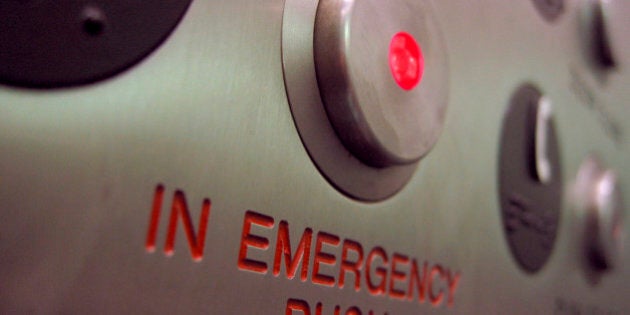
Many Canadians have not put aside an adequate emergency fund to deal with unexpected contingencies and are relying on debt or the belief that in a pinch they can dip into their retirement savings temporarily. Using your RRSP in a pinch may seem like a reasonable course of action, but in practice it can be a big mistake. There are costs to dipping into your RRSP that that make it particularly unattractive for this purpose, especially with much better options like the TFSA available.
Reason 1: Partial Deregistration Fees
You've probably never heard of these, and most people won't until they get charged, but most institutions charge you to withdraw from an RRSP. It's usually about $50, but on a $1000 withdrawal that's five per cent.
Once you take money out of your RRSP that contribution room is gone for good. You can't re-contribute it back next year like you can with the TFSA.
Reason 2: Contribution Room is Gone Forever
Once you take money out of your RRSP that contribution room is gone for good. You can't re-contribute it back next year like you can with the TFSA.
Reason 3: Withholding Tax and Income Tax
You will be charged a withholding tax of anywhere from 10 per cent to 30 per cent (half that in Quebec). So, bear that in mind; you'll need to withdraw enough to cover your emergency expenses and the tax. Since RRSP withdrawals are considered income in the year you withdraw them, depending on your current income you may also owe further tax at the end of the year. Be sure to prepare for these additional tax costs.
Reason 4: Market Volatility
Generally, retirement savings should be invested in long-term investment strategies that are exposed to market volatility. Emergencies don't usually pick the ideal time for you to withdraw funds. For example, if you were to need this money during an economic crisis (a time that is often correlated with an increase in personal financial crisis) you will end up selling these RRSP assets at a low which will further exacerbate the negative impact of the withdrawals.
A good emergency fund should not be invested in high risk investments. It should also be easy and convenient to access and, ideally, not have any impact on your retirement plans. You should consider having anywhere from two to six months of emergency funds put aside. If you're just getting started with saving, your first step should be to set aside some emergency funds before beginning your retirement savings. You should also ensure you have appropriate contingency insurance such as disability and critical illness. Taking these steps will help ensure your retirement savings are secure to grow even when times get tough.
Tea Nicola is the Co-Founder and Chief Executive Officer of WealthBar, Canada's only full-service online financial advisor offering diversified portfolios of low-cost ETFs, insurance and financial advice. Passionate about personal finance, Tea is looking to change the way Canadians save by making investing smarter, more transparent, and at half the cost of traditional advisors.
Follow WealthBar on Facebook, Twitter or Linkedin to keep up to date with the latest personal finance tips.
Follow HuffPost Canada Blogs on Facebook